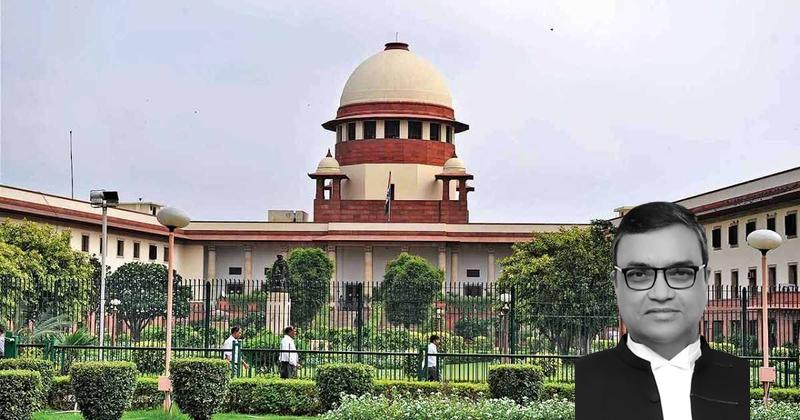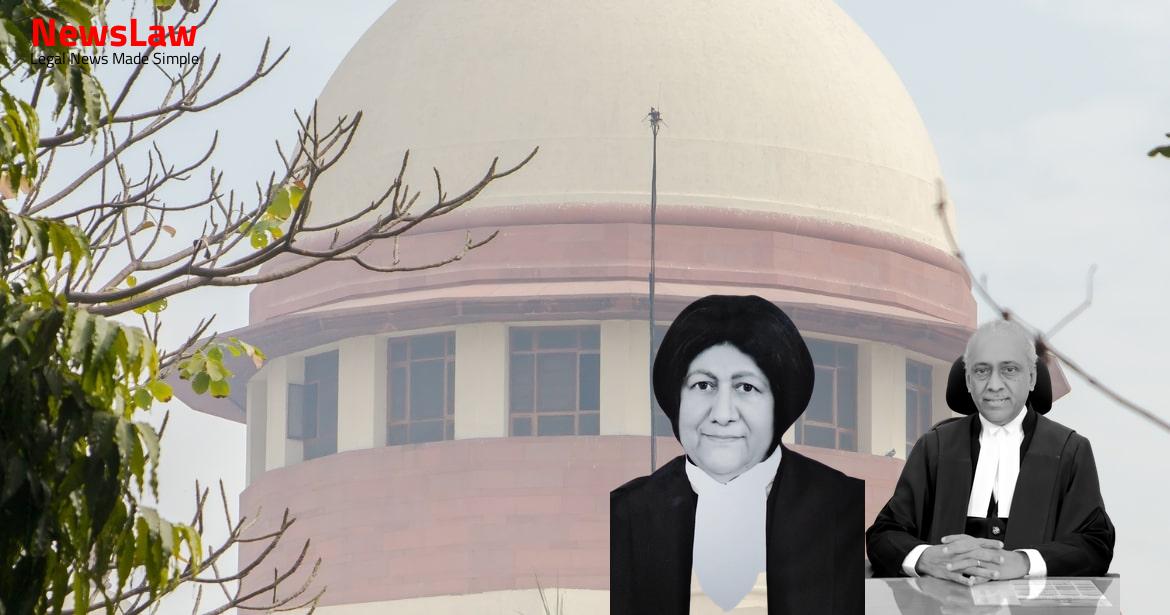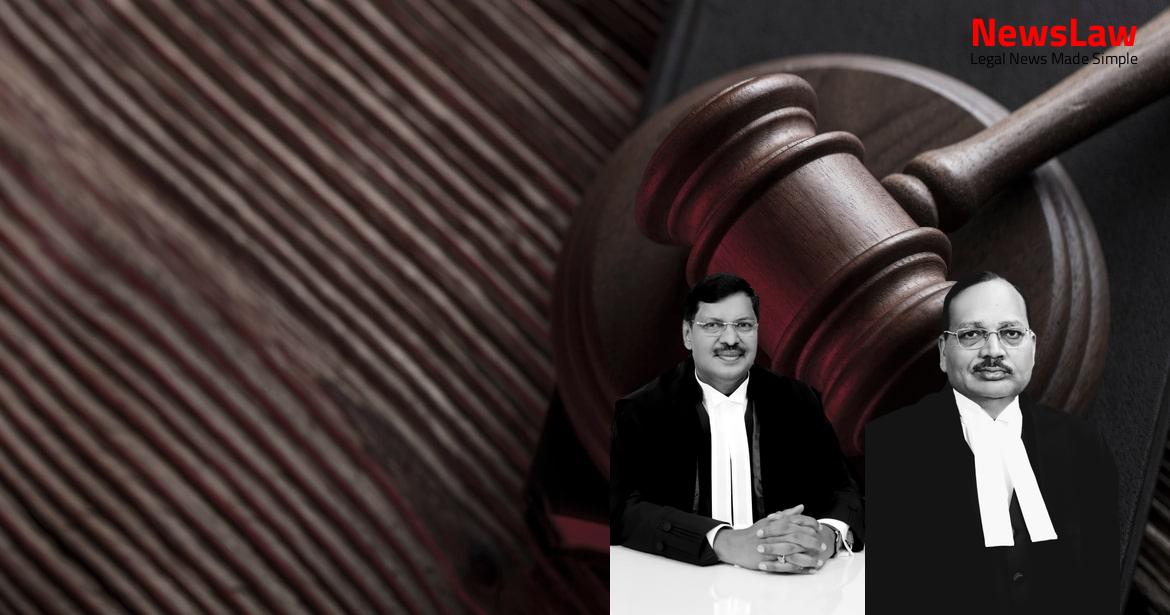These appeals are directed against a judgment and order of the Gujarat High Court, wherein mandatory fulfilment of a ‘pre – import condition’ incorporated in the Foreign Trade Policy of 2015- 2020 (“FTP”) and Handbook of Procedures 2015- 2020 (“HBP”) by Notification No 33 / 2015 -20
Also Read: https://newslaw.in/supreme-court/legal-analysis-of-claim-for-loss-of-profit-in-delayed-contract/
and Notification No 79 / 2015-Customs, both dated 13.10.2017, was set aside. Leviable under Section 3(7) of The Customs Tariff Act, 1975. Leviable under Section 3(9) of The Customs Tariff Act, 1975. To regulate and guide the procedure to be followed for implementing the provisions of the FTP and the rules framed thereunder, the Director General of Foreign Trade ( “ DGFT ” ) notified the HBP, chapter 4 of which prescribed the procedure for availing duty exemption / remission schemes. Notification No 79 / 2017-Customs amended Notification No 18 / 2015-Customs by granting IGST and compensation cess exemption, subject to the following two conditions: “Provided further that notwithstanding anything contained hereinabove for the said authorisations where the exemption from integrated tax and the goods and services tax compensation cess leviable thereon under sub-section (7) and sub-section (9) of section 3 of the said Customs Tariff Act, has been availed, the export obligation shall be fulfilled by physical exports only.” 4 ***
“ That the exemption from integrated tax and the goods and services tax compensation cess leviable thereon under sub-section (7) and sub- section (9) of section 3 of the said Customs Tariff Act shall be subject to pre-import condition ” (emphasis supplied) At the same time, Notification No 33 / 2015-2020 was issued, amending various provisions of the FTP, whereby this ‘ pre-import condition ’ was incorporated in paragraph 4.14 thereof with effect from 13.10.2017. The respondents were of the view that the scope of ‘ pre-import condition ’ was unclear, whereas the DRI officers conducting the inquiry and investigation, however, were of the view that ‘ pre-import condition ’ meant that goods had to be imported first, and then the final products manufactured with such imported goods were to be exported.
Arguments of the Revenue before the High Court 7. The Revenue contended that exporters were free to export first and import at a later stage in terms of paragraphs 4.27 and 4.28 of the HBP. Such exemption was allowed indirectly by allowing refund of IGST paid at the time of imports under AA within a specified time. To obviate this problem, the GST Council allowed exemption from IGST when imported under AAs.
According to the Revenue, a cut-off date could have been declared, and only AAs issued after 13.10.2017 could have been declared eligible for such benefits, but the same was not done. The ‘ pre-import condition ’ was in- built within the AA scheme itself under paragraph 4.03 of the policy. The High Court, after considering the notifications and taking into account the exporters’ submissions, held that paragraph 4.27 of the FTP envisaged exports in anticipation of authorisation, in terms of the cycle of import-manufacture- export carried out, including delivery time of 3-4 months allowed normally by overseas buyers, within minimum six months’ time for completion of the cycle. The result was that if the importer wanted benefit of exemption from the levy of integrated tax and compensation cess, the fact that other levies were not subject to ‘ pre-import condition ’ was immaterial because the same inputs Supra note 1, para 27. It was held accordingly that: “ The condition of pre-import militates against the Advance Authorisation Scheme and therefore, the impugned condition (xii) in Notification No 18/2015-Cus dated 1st April, 2015 introduced vide Notification No 79/2017 : MANU/CUST/0095/2017 dated 13th October, 2017 as well as the amendment in paragraph 4.14 of the Foreign Trade Policy made vide Notification 11 3(3) and 3(5) of the Customs Tariff Act, 1975 for decades the procedure was permitted, and continued to be permitted, (for the purpose of exemption from levy of IGST and compensation cess), yet, such imports were “ suddenly ” treated as “ replenishment imports ” which was held to be “i ncomprehensible ”.
This aspect of physical incorporation of input materials in the export goods was covered under paragraph 4.03 of the FTP, which specifically demanded physical incorporation of imported materials in export goods which was possible only if imports were made prior to export. Paragraph 4.27 (d) of the HBP barred benefit of export in anticipation of authorization for the inputs with ‘ pre-import condition ’. Therefore, holding ‘ pre-import condition ’ as unreasonable as the same was in contrast with paragraph 4.27 (a) and also that the Government did not take enough care to eradicate such apparent 13 paradox, was based on the wrong set of facts, and was contrary to the provisions of the law. The court erroneously granted primacy to paragraph 4.27 of the HBP over paragraph 4.03 of the FTP, when infact the FTP had pre-eminence over the HBP for laying down the procedures to be followed by an exporter or importer in terms of paragraph 1.03 of the FTP. Paragraph 4.03(a) of the FTP provided that: “ (a) Advance Authorisation is issued to allow duty free import of input, which is physically incorporated in export product (making normal allowance for wastage). In the second situation however, the importer could use materials procured otherwise, instead of duty-free materials to manufacture export goods, but the nature of materials (so procured) had to be identical in all respects with the input materials to be imported. The Revenue pointed out that paragraph 4.13 (1) itself left the issue of which inputs was to be subjected to ‘ pre import condition ’ open to the DGFT to notify: “DGFT may, by Notification, impose pre-import condition for inputs under this Chapter.” The provision clearly left open, the scope of imposing ‘ pre-import condition ’ on any goods which could have been covered by the said Chapter 4 of the Policy. Further, Appendix-4J was a negative list for the purpose of paragraph 4.22, which specified a set of goods for which export obligation period was different from the general provision. It was argued that there was no conflict between paragraph 4.14 of the HBP and paragraph 4.13 of the FTP because paragraph 4.14 imposed ‘ pre-import condition ’ even in case of inputs not falling within the ambit of paragraph 4.13. By virtue of the said notification, the moment any manufacturer decided to import any item under AA availing IGST benefit, the ‘ pre-import ’ requirement, as enumerated under paragraph 4.14, was attracted. Garg v Union of India ; Union of India v VKC Footsteps India (P) Ltd. Meenakshi Arora, learned senior counsel, argued that an AA under the FTP could be issued either to a manufacturer-exporter or a merchant exporter tied with a supporting manufacturer with past export performance (in at least the preceding two financial years). Thus, there was no rationale or justification in imposing the ‘ pre-import condition ’ only for a 20 limited period from 13.10.2017 to 09.01.2019 to a scheme operating successfully without any such condition. If ‘ pre-import condition ’ was applicable for AA, then the whole scheme would be nullified because it was impossible for any manufacturer-importer to satisfy the ‘ pre-import condition ’ when the export orders were to be executed by supplying the final products within a short period of 4 weeks to 8 weeks after receiving the purchase orders from overseas customers. It was submitted that the ‘ pre-import condition ’ violated Article 14, which permitted reasonable classification to achieve specific ends. The Union meted out differential treatment to the same class of license holders by enabling only certain class of license holders to avail the IGST benefit. When the levy of IGST on imported goods was treated like the levy of BCD, there was no reason why the unconditional exemption of BCD granted to license holders under the scheme could not be extended to the IGST exemption available for goods imported under the same scheme. Rathnam & Sons which held that grant of different exemption based on unintelligible differentia between two categories of assesses for payment of customs duty was discriminatory and unreasonable.
Reliance was placed upon Laxmi Khandsari (supra), where the court held that in imposing restrictions, the State ought to adopt an objective standard amounting to social control by restricting the rights of the citizens where the necessities of the situation demand. Under the scheme, exemption from the payment of import duties 1962 (2) SCR 169 25 is given to raw materials / inputs required for the manufacture of export products i.e., one can import raw materials or inputs at zero customs duty for production of export products. Advance Licenses are issued to allow duty-free import of inputs, which are then physically incorporated in export goods (after making normal allowance for wastage). Paragraph 4.03 of the policy makes provision for AA and reads thus: “4.03 Advance Authorisation (a) Advance Authorisation is issued to allow duty free import of input, which is physically incorporated in export product (making normal allowance for wastage). (iii) Import of drugs from unregistered sources shall have pre-import condition.” 14 Details of Duties exempted Imports under Advance Authorisation are exempted from payment of Basic Customs Duty, Additional Customs Duty, Education Cess, Anti- dumping Duty, Countervailing Duty, Safeguard Duty, Transition Product Specific Safeguard Duty, wherever applicable.
(ii) In case where CENVAT/input tax credit facility on input has been availed for the exported goods, even after completion of export obligation, the goods imported against such Advance Authorisation shall be utilized only in the manufacture of dutiable goods whether within the same factory or outside (by a supporting manufacturer).
Paragraph 4.27 (a) provides for “Exports in Anticipation of Authorisation” which is extracted below: “4.27 Exports in Anticipation of Authorisation Exports/supplies made from the date of EDI generated file number for an Advance Authorisation, may be accepted towards discharge of EO. The provision permitted exports in anticipation of authorisation and permits exports towards discharge of export obligation on the basis of the file number even prior to the grant of AAs. **************** ********* (9) Any article which is imported into India shall, in addition, be liable to the Goods and Services Tax compensation cess at such rate, as is leviable under section 8 of the Goods and Services Tax (Compensation 29 to States) Cess Act, 2017 on a like article on its supply in India, on the value of the imported article as determined under sub-section (10).” Section 3 of the Customs Tariff Act, 1975 as amended after the coming into force of the GST regime, provided for levy of the following additional duties: (1) levy of a duty (referred to as additional duty) equal to the excise duty for the time being leviable on a like article if produced or manufactured in India [Section 3 (1) CTA]; (2) levy of such additional duty as would counter-balance the excise duty leviable on any raw materials, components, and ingredients of the same nature as, or similar to those, used in the production or manufacture of such article [Section 3 (3) CTA]; (3) levy of additional duty as would counter-balance the sales tax, value added tax, local tax or any other charges for the time being leviable on a like article on its sale, purchase or transportation in India [SAD, under Section 3 (5) CTA]; (4) levy of integrated tax as leviable under section 5 of the Integrated Goods and Services Tax Act, 2017; [under Section 3 (7) CTA] and; (5) levy of GST compensation cess at such rate as is leviable under section 8 of the Goods and Services Tax (Compensation to States) Cess Act, 2017 As there was no corresponding notification exempting the additional duties leviable under Sections 3 (7) and (9) CTA, exporters had to pay IGST and compensation cess and seek input tax credit as applicable under the GST Rules. The amending notification also introduced a proviso in condition (viii), after the proviso which reads thus: “Provided further that notwithstanding anything contained hereinabove for the said authorisations where the exemption from integrated tax and the goods and services tax compensation cess leviable thereon under sub-section (7) and sub-section (9) of section 3 of the Customs Tariff Act, has been availed, the export obligation shall be fulfilled by physical exports only. “
Imports under Advance Authorisation are exempted from payment of Basic Customs Duty, Additional Customs Duty, Education Cess, Anti- dumping Duty, Countervailing Duty, Safeguard Duty, Transition Product Specific Safeguard Duty, wherever applicable. To the extent it is relevant to the present case, is extracted below: “T rade FTP Notice 11/2017 Subject: Important FTP provisions in the context of the implementation of the GST regime applicable w.e.f 01.07.2017 32 Under the GST regime, no exemption from payment of integrated GST and Compensation Cess would be available for imports under Advance Authorisation. Importers would need to pay IGST and take input tax credit as applicable under GST rules. Likewise, the HBP was amended, and paragraph 4.27 (d) was inserted, which stated that duty 33 free authorisation for inputs subject to ‘ pre-import condition ’ could not be issued. Paragraph 6.8 (h) stated that: “(h) EOU/EHTP/STP/BTP units may sell finished products, which are freely importable under the Policy in the DTA under intimation to the Development Commissioner against payment of full duties provided they have achieved the positive N FE.” By a notification paragraph 6.8( a ) and paragraph 6.8( h ) of the said FTP were amended, preventing EOUs from making DTA sales of the finished marble made from imported rough marble, with immediate effect. Lastly, it was held that exporters, who have to import inputs, would face impossibility in fulfilling the ‘ pre-import condition ’, because the normal cycle of import of inputs and export of finished products 35 would be for a period of six months, whereas the period, which the regime permits, would work out to three months.
Furthermore, by paragraph 4.13 of the FTP, the DGFT could impose ‘ pre-import conditions ’ on articles other than those specified: “(i) DGFT may, by Notification, impose “pre-import condition” for inputs under this Chapter.” 57.
79/2017), were one, that the exemption could only be extended so long as exports made under the AAs were physical exports in nature and the other that to avail such benefit, one was to follow the ‘ pre-import condition ’. However, paragraph 4.05 of the FTP defines categories for which AAs can be issued, somewhat expansively and prescribes that – “ (c) Advance Authorization shall be issued for: (i) Physical export (including export to SEZ); (ii) Intermediate supply; and/ or (iii) Supply of goods to the categories mentioned in paragraph 7.02 (b), (c), (e), (f) (g) and (h) of this FTP.
The definition extends in specific terms (under Chapter 4 of FTP) – supplies made to SEZ are considered as ‘physical exports’ despite not being an event in which goods are being taken out of India. Barring few indirect taxes, all the major indirect 38 taxes levied by the Central and State governments are subsumed into the GST.
Since the entire GST universe, so to say, is dependent on a comprehensive input credit and refund system, the policy makers (which in this case, were tax administrators and the DGFT) were of the opinion that since countervailing duty (CVD) and special additional duty (SAD), which were subsumed under the GST regime and the other levy (compensation cess), the previous regime of permitting AAs to govern import of duty free articles, as inputs, should continue, but that for the new levies, the system of input credit and refunds should prevail. v Om Prakash Sharma & Ors
that inconvenience or hardship is not a ground for the court to interpret the plain language of the statute differently, to give relief. A statute must of course be given effect to whether a court likes the result or not.” Therefore, it is evident that the hardship caused to an individual, cannot be a ground for not giving effective and grammatical meaning to every word of the provision, if the language used therein is unequivocal.” (2013) 11 SCC 451. 40
Case Title: UNION OF INDIA Vs. COSMO FILMS LIMITED (2023 INSC 463)
Case Number: C.A. No.-000290-000290 / 2023



